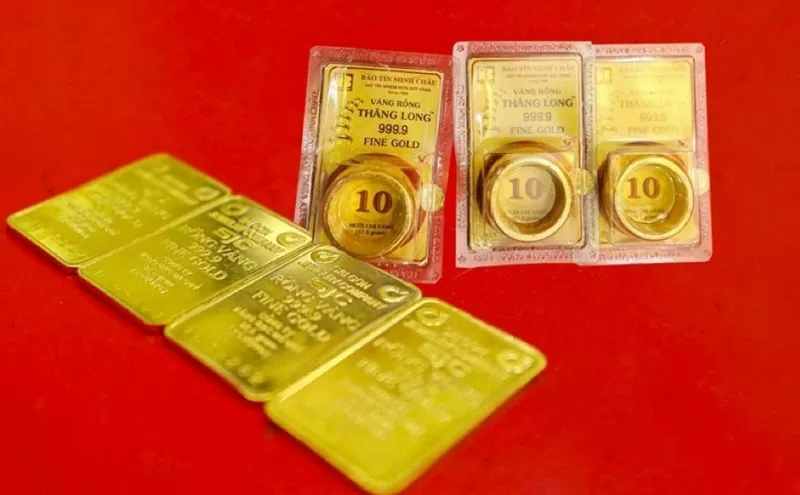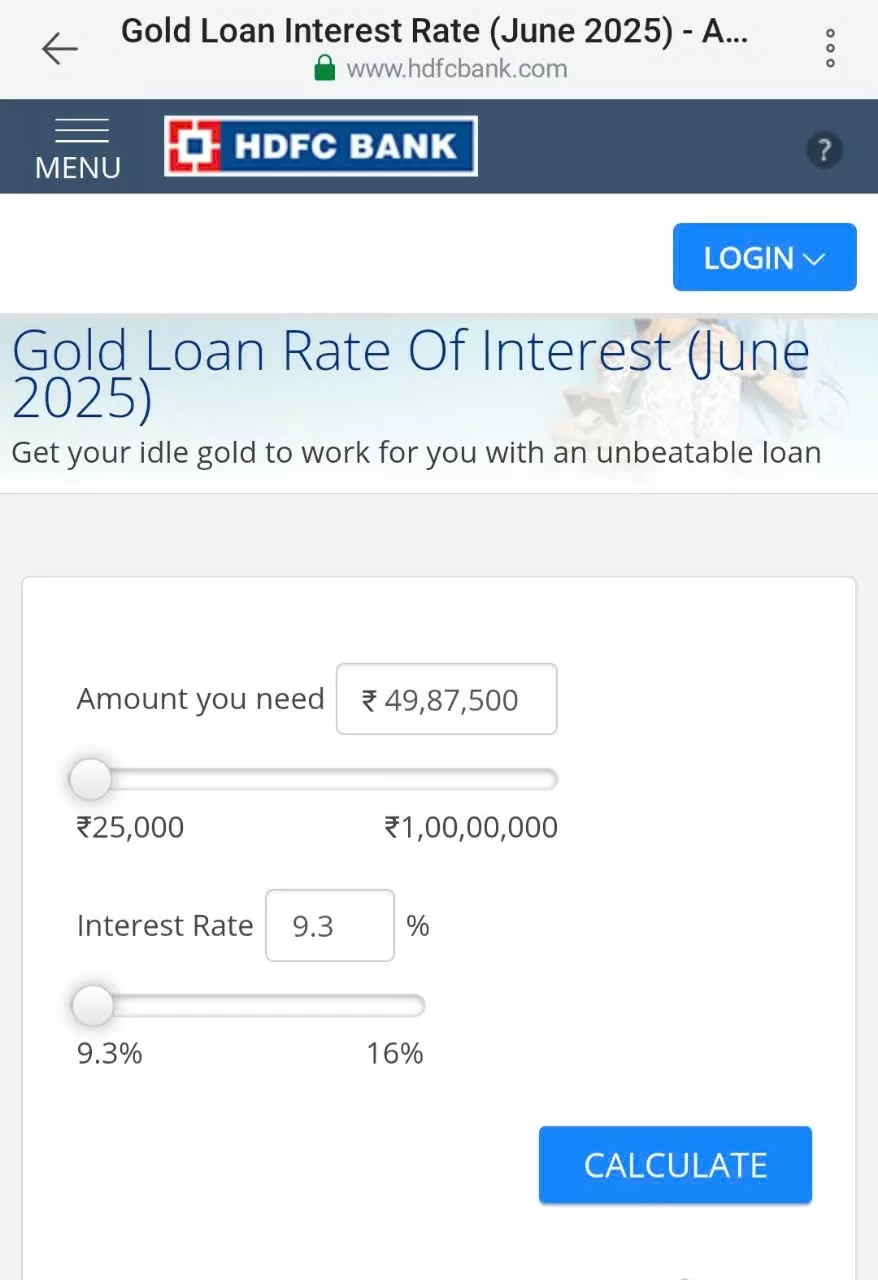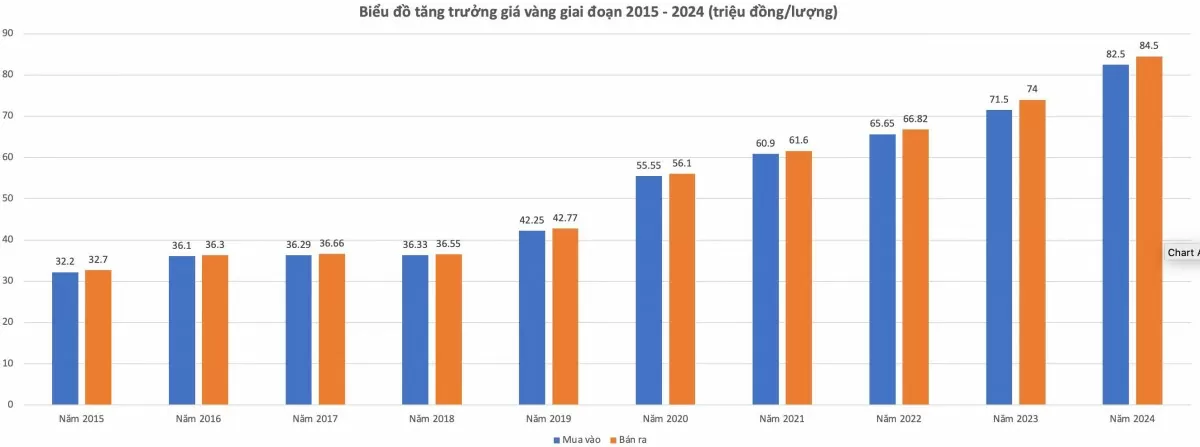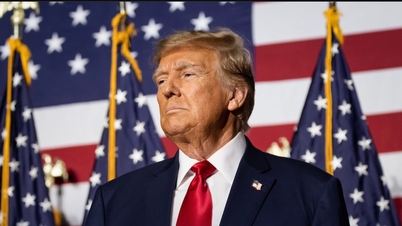Real need
Having retired a few years ago, Ms. Minh Nguyet (Hai Ba Trung District, Hanoi ) has several savings accounts and regularly buys gold whenever she receives income. Normally, she keeps her passbooks and gold in a cupboard and doesn't worry at all. However, after her sister's house, located a few hundred meters away from hers, showed signs of being broken into, she started to think.
According to Ms. Nguyet, savings accounts are not a problem because even if thieves steal them, they can't withdraw the money. But gold is different. There was a time when she considered selling her gold to put it in a savings account, but she didn't do it because, having worked in the finance industry before, she always believed in the principle of "not putting all your eggs in one basket." Therefore, she decided to continue saving and keep her gold.
Then she suddenly thought, "Why not let the bank hold the gold?" Ms. Nguyet wished that banks would be allowed to hold gold for the people and pay interest as in the old days. Saving in gold would both help gold, as money, circulate and ensure the safety of people's assets.
Sharing the same wish as Ms. Nguyet is Mr. Quang (Tay Mo, Hanoi). However, what worries Mr. Quang is fire. Just this week, there have been two apartment building fires in Hanoi alone, causing him concern. According to Mr. Quang, while burnt documents can be reissued, gold, once burned, is "turned to gold" forever. Therefore, Mr. Quang hopes to have the opportunity to deposit his savings in gold, thereby contributing to the circulation of money.
 |
| Recently, people have started mentioning their desire to save money in gold. (Illustrative image.) |
We need to mobilize gold from the people.
Speaking with a reporter from the Industry and Trade Newspaper, Mr. Nguyen Quoc Hung, Vice Chairman and General Secretary of the Vietnam Banking Association, stated that depositing savings in gold has quite a few problems.
If you deposit gold in a bank and the bank just leaves it idle, it's wasteful. On the other hand, if the bank uses that gold for loans, and the price of gold rises too sharply, customers will suffer losses, or even be unable to repay their debts, which will also negatively impact the bank.
Offering a contrasting viewpoint, Dr. Ngo Tri Long, an economic expert, presented an estimate that 500-600 tons of physical gold are currently held by the public, equivalent to 45-50 billion USD, but are not being mobilized for production or investment due to a lack of legal, transparent, and secure channels. The core reason, he attributes to administrative management policies and the monopolization of gold bullion.
 |
According to the newly updated interest rate schedule in June 2025, HDFC Bank offers gold loans with interest rates ranging from 9.3%/year to 16%/year. Photo: Hoang Quyen |
Therefore, Mr. Long commented, "Compared internationally, Vietnam lags behind in gold management." While many countries have established national gold exchanges (China, India, Thailand), or encouraged the formation of gold investment funds (gold ETFs), Vietnam still maintains a manual, monopolistic mechanism.
Regarding the utilization of gold resources from the public, Mr. Long stated that India mobilizes gold from the people through the "Gold Monetization Scheme," paying interest to depositors in gold and reusing that gold for the jewelry industry.
Therefore, Mr. Long proposed developing alternative investment channels; piloting gold investment funds, gold certificates, and gold deposits through gold investment funds; and building a fund model to attract approximately 500-600 tons of gold currently hoarded by the public.
Gold prices fluctuate, but lending in gold remains profitable.
It's clear that the demand for gold savings among the public is real (leading banks to lend out gold), and the risks are also real. However, as mentioned above, India has a "Gold Monetization Scheme" that pays interest to gold depositors. Simultaneously, many banks in the world's second-largest gold consumer offer gold lending products with interest rates that can compensate for fluctuations in gold prices.
 |
| Chart: Hoang Quyen. |
For example, gold lending products are quite popular at HDFC Bank in India. According to the newly updated interest rate schedule in June 2025, HDFC Bank offers gold loans with interest rates ranging from 9.3% to 16% per year. Another Indian bank, ICICI Bank, also offers this product with interest rates from 9.15% to 18% per year.
As can be seen, interest rates for gold loans range from 9% to under 20% per year. Meanwhile, in the last 10 years (excluding 2020), the upward trend of gold has fluctuated below the interest rates for gold loans.
Specifically, considering the fluctuations in gold prices, from the end of 2024 to 2015, the price of SJC gold reached approximately 82.5 - 84.5 million VND/ounce (2024); 71.50 - 74.00 million VND/ounce (2023); 65.65 - 66.82 million VND/ounce (2022); 60.90 - 61.60 million VND/ounce (2021); 55.55 - 56.1 million VND/ounce (2020); 42.25 - 42.77 million VND/ounce (2019); and 36.33 - 36.55 million VND/ounce (2018). 36.29 – 36.66 million VND/ounce (2017); 36.10 – 36.30 million VND/ounce (2016); 32.20 - 32.70 million VND/ounce (2015).
Thus, the growth rate of SJC gold in the years from 2024 to 2016 was 14.2% (2024), 10.7% (2023), 8.5% (2022), 9.8% (2021), 31.2% (2020), 17% (2019), -0.3% (2018), 1% (2017), and 11% (2016), respectively.
| Prior to 2012, gold savings deposits and gold-backed loans were popular products at commercial banks. However, when gold prices fluctuated sharply, many risks arose. Therefore, the State Bank of Vietnam issued Circular 11/2011 and subsequently Circular 12/2012, requiring banks to cease mobilizing and lending capital in gold from June 30, 2012. Currently, banks no longer mobilize or lend gold in gold, but are permitted to hold gold on behalf of customers. |
Source: https://congthuong.vn/gui-tiet-kiem-bang-vang-nhu-cau-co-that-nhung-can-than-trong-391250.html










































































































Comment (0)